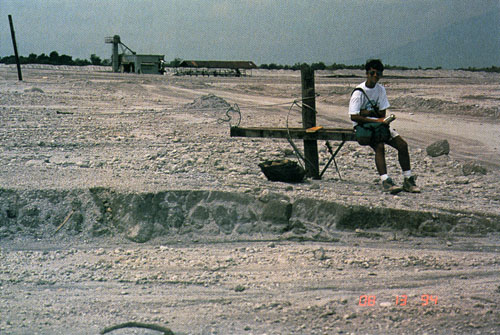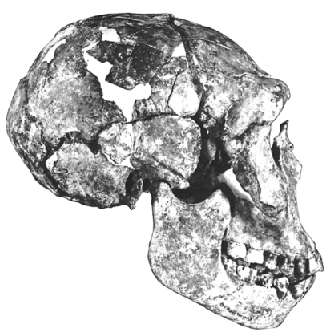stevevw
inquisitive
- Nov 4, 2013
- 16,617
- 1,892
- Gender
- Male
- Faith
- Christian
- Marital Status
- Private
Polystrate Trees
Polystrate Fossils:
One of the strongest pieces of evidence for a worldwide flood is the existence of what Rupke termed "polystrate fossils." Such fossils are found all over the world. They usually consist of fossil trees that were buried upright, and which often traverse multiple layers of strata such as sandstone, limestone, shale, and even coal beds. 1,2,3,4 They range in size from small rootlets to trees over 80 feet long. 3 Sometimes they are oblique in relation to the surrounding strata, but more often they are perpendicular to it. For example, at Joggins, Nova Scotia, polystrate tree (and root) fossils are found at various intervals throughout roughly 2,500 feet of strata. Many of these are from 10-20 feet long, 5,6 and, at least one was 40 feet long. 5,6,7
Yet another interesting finding concerning petrified trees, is that many of them extend vertically through millions and millions of years of sedimentary rock. How can this phenomenon be explained? A common explanation is that these do not represent areas of the standard geologic column, but areas of rapid local flooding and sedimentation. Therefore, the layers that these trees pass through do not represent thousands and millions of years. However, the pictures shown to the right are of a petrified tree (located near Katherine Hill Bay next to Flat Rocks Point, Australia) extending up through many sedimentary layers and through two separated coal seams (See Video Below).4 The tree itself is twelve feet tall, and was uncovered by a coal mining company. If the two separated coal seams represent long periods of time, how could this tree be extending between them both? It seems to me that this is a difficulty for the current understanding of science. Notice also that the layers themselves show no weathering between one layer and the next even though each layer was supposedly the surface of the earth for thousands if not millions of years. These combined mysteries are more easily explained by rapid underwater burial with quickly forming sediments. The theory that each fossil bearing layer in the geologic column represents eons of time seems inadequate to explain such problems that are easily explained by a quick catastrophic event.
Polystrate Fossil Tree - YouTube
Polystrate Fossils:
One of the strongest pieces of evidence for a worldwide flood is the existence of what Rupke termed "polystrate fossils." Such fossils are found all over the world. They usually consist of fossil trees that were buried upright, and which often traverse multiple layers of strata such as sandstone, limestone, shale, and even coal beds. 1,2,3,4 They range in size from small rootlets to trees over 80 feet long. 3 Sometimes they are oblique in relation to the surrounding strata, but more often they are perpendicular to it. For example, at Joggins, Nova Scotia, polystrate tree (and root) fossils are found at various intervals throughout roughly 2,500 feet of strata. Many of these are from 10-20 feet long, 5,6 and, at least one was 40 feet long. 5,6,7
Yet another interesting finding concerning petrified trees, is that many of them extend vertically through millions and millions of years of sedimentary rock. How can this phenomenon be explained? A common explanation is that these do not represent areas of the standard geologic column, but areas of rapid local flooding and sedimentation. Therefore, the layers that these trees pass through do not represent thousands and millions of years. However, the pictures shown to the right are of a petrified tree (located near Katherine Hill Bay next to Flat Rocks Point, Australia) extending up through many sedimentary layers and through two separated coal seams (See Video Below).4 The tree itself is twelve feet tall, and was uncovered by a coal mining company. If the two separated coal seams represent long periods of time, how could this tree be extending between them both? It seems to me that this is a difficulty for the current understanding of science. Notice also that the layers themselves show no weathering between one layer and the next even though each layer was supposedly the surface of the earth for thousands if not millions of years. These combined mysteries are more easily explained by rapid underwater burial with quickly forming sediments. The theory that each fossil bearing layer in the geologic column represents eons of time seems inadequate to explain such problems that are easily explained by a quick catastrophic event.
Polystrate Fossil Tree - YouTube
Upvote
0




